Halo Infinite
I had a girlfriend who would eat the meat straight out of the sausage casing. That’s not a euphemism for anything, she would literally get the BBQ Sausages from the butchers and squeeze thumbnail-sized chunks of refined, processed, uncooked meat out of the faux-lambskin casing they use for shitty supermarket sausages straight into her mouth like they were Rolos. It was disgusting.
I asked her once why she didn’t, you know, cook the things, and she said she didn’t think cooking changed much for her. The difference between cooked and uncooked was inconsequential to her. She wasn’t trying to speed-evolve her gut bacteria to fight off some alien invasion, she wasn’t hideously impatient, she didn’t feel it tasted better uncooked. She just figured there was zero discernible difference between cooked and uncooked, and so why not eat them raw while waiting for dinner?
I never really got my head around that, to be honest. I don’t want to fall into a trap around sushi and ceviche and stuff, so let’s just say I believe that ‘fully prepared’ is always better.
And Halo Infinite is not fully prepared.
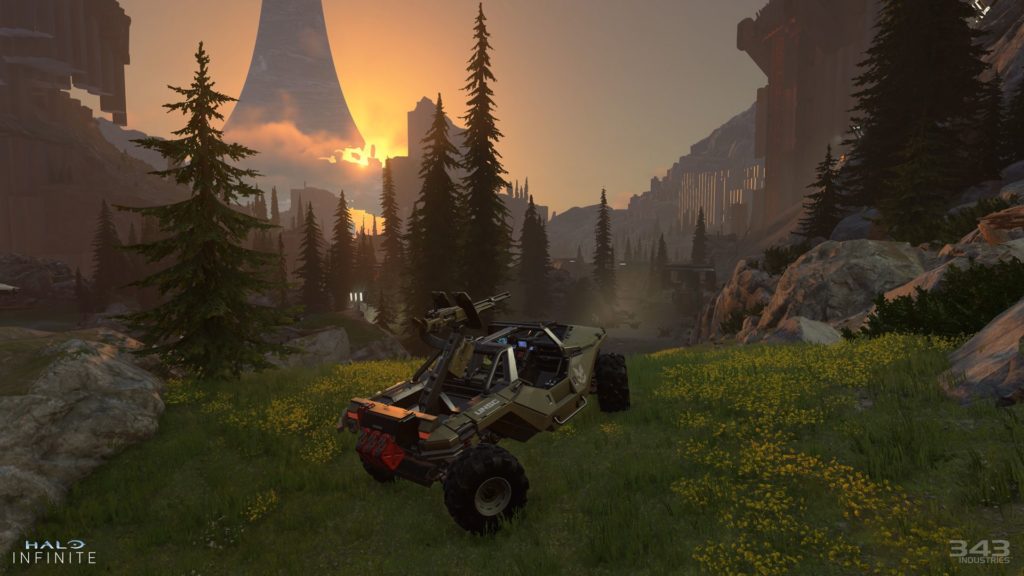
It’s underdone. It’s half-baked. It arrived 12 months later than it was supposed to, and it could be another 12 months before it’s ready.
And it’s still one of the best AAA shooters I’ve played this year.
The campaign starts out and it’s oh so 343’s version of Halo — these narrow corridors of death, these kill chambers that need to emptied before you can move on. But it’s a little different here, because Master Chief has a grapple hook. He has mobility. If Doom 2016 stole its kill chamber level design from 343’s Halo, then Halo Infinite got the better end of the bargain by copying Doom Eternal’s high-mobility combat – even if I think Doom Eternal does it better.
We also get a taste of the storytelling to come — and as always it tastes bland. Halo’s storytelling has never worked for me. It has a little bit of Star Wars Syndrome, in that the first game/trilogy captured something special for people, and ever since it’s been a struggle to recapture that magic. Like Star Wars, some of Halo’s best narrative stuff was all Expanded Universe — I remember reading The Fall of Reach before Halo 3 dropped and loving it, but the only game that ever really lived up to that book’s storytelling was, well, Halo: Reach.
Halo Infinite is hardly any different, but I fully recognise that I’m an outlier here. I’ve never connected with Cortana. I don’t think I ever would. Her entire Arc is one that actually underscores precisely why I haven’t ever connected with her, as she started off as a very helpful and sassy GPS for MC, and she gradually fulfilled the expected arc of every AI in science fiction when she self-actualised and decided to kill everybody.
There’s nowhere in that arc where I’m on board with the characterisation, and it has always made the Master Chief feel a little silly to me. Master Chief is a seven foot tall emotionless behemoth who is in love with Cortana, his waifu. I’ve worked on the consumer side of video games for 20-ish years now, and I have literally met more than one guy like that. They’ve never been terribly heroic.
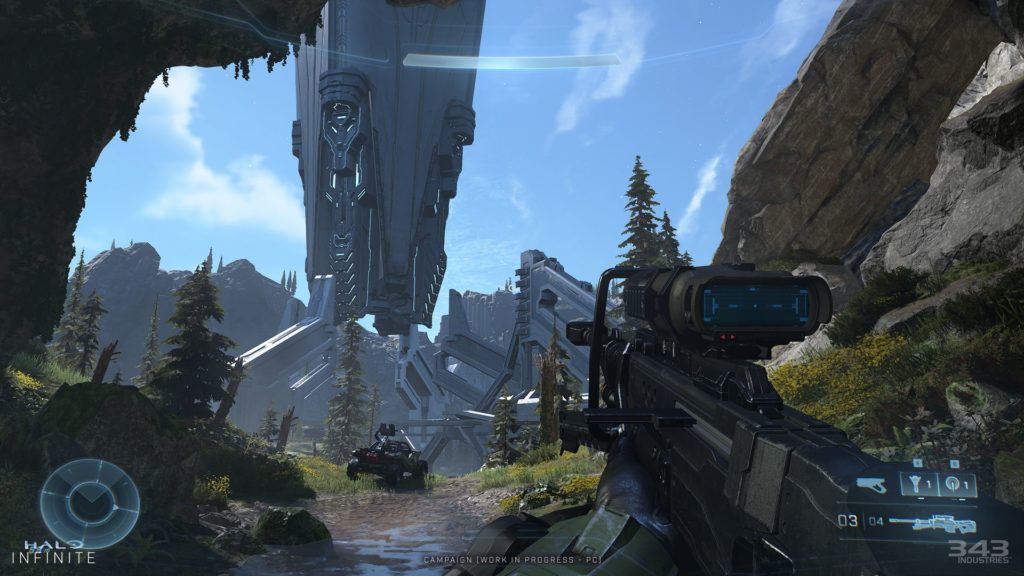
But it worked in-game. Because in-game Halo is kind of silly. The grunts yell and cry about the demon coming, and they beg and plead or taunt you as they fight. And while the slapstick way they run and trip and flail adds to the comedy, their ability to semi-intelligently work together creates a sense of challenge that makes them a threat.
In cut-scenes, that’s not how it goes. You don’t converse with grunts in cut-scenes, just the too serious elements of Halo’s canon. The Elites and Brutes and Monitors are those in positions of power within the Halo universe, and there’s little humour in what they have to say and do, even if all the Elites sound like Killface from Frisky Dingo.
And so it is at the beginning of Halo Infinite, when you meet Echo 216 — technically the ship’s name, but that’s how you address its pilot — and Weapon, your new AI who looks and sounds exactly like Cortana. While Echo 216 wails about the terrible burden he’s saddled with, having to ferry the Master Chief around while MC saves humanity, and while Weapon explains the intricate details of the plot to you, it just feels like more of the same.
Echo 216 constantly complains about the danger he’s in (ignoring the fact that he has accidentally found himself attached, like a remora, to the biggest shark in the universal ocean) and Weapon does Cortana things, although they spend a lot time stressing that she’s not Cortana. Master Chief reacts to all of this in his customary “the silent protagonist thing doesn’t work any more but what if he said as little as possible as flatly as possible”, which means any emotions he might be conveying need to be relayed, third party, by Weapon.
At one point Weapon begs Master Chief to tell her why he doesn’t trust her, which was literally the moment when I found out Master Chief didn’t trust her because I hadn’t seen any actual indication of it from him prior. Actually… consider this next paragraph a spoiler but I have to get it out of me and I’ll strip it of context to preserve the moment…
Weapon is puzzled throughout the story because she believes she should have been deleted. Then, at one point in the story MC attempts to delete her and she gets mad at him for it. But then she explains how she should already be deleted and also how dare MC delete her. AI constructs, man. Can’t live with them embedded in the layer between your consciousness and subconsciousness, can’t live without them.
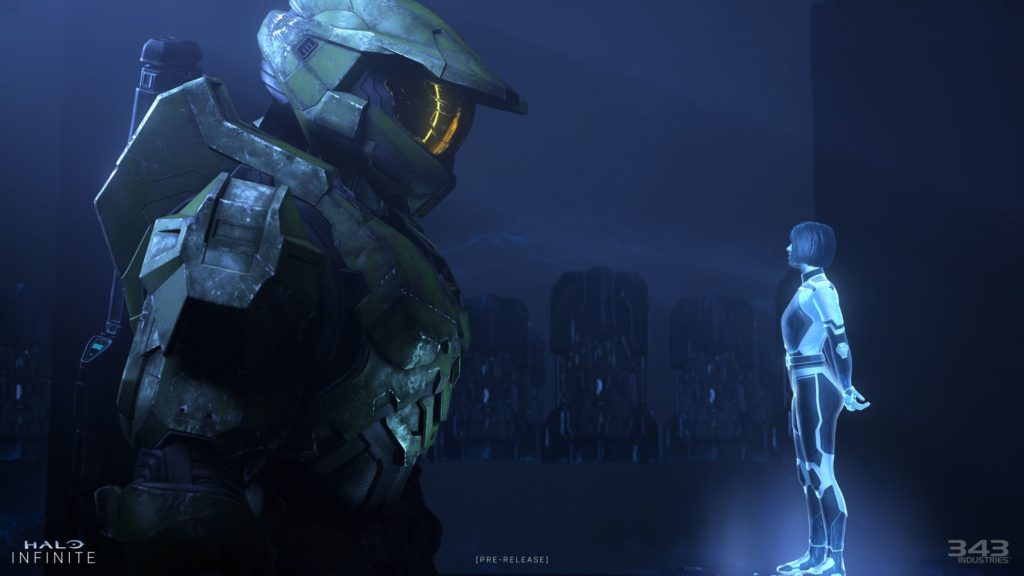
Anyway, I’ve digressed. After two largely linear, very Halo levels, you hop onto an elevator and are treated to what Halo Infinite is all about. The game reveals the open world Halo experience the game was kind-of always supposed to be. If Halo was Combat Evolved, then here you have Halo: CE: E.
And it’s amazing.
Do you see that mountain? You can climb it. You actually should climb it. If you’re smart, you’ll spend every Spartan Core you get (the upgrade currency of Halo Infinite) upgrading your grapple hook immediately, and if you do this, you can go anywhere. Well, almost anywhere.
Upon exiting the elevator room, I immediately used the grapple to break the bounds of the game. Literally. I was disappointed to see, mere moments into entering the open world, that I was presented with a message telling me to return to the battlefield. It’s disappointing how the game locks you out of areas that are mission specific, though understandable. There’s a sense of freedom inherent to the sense of play derived from the mobility in Halo Infinite that is betrayed by this unnecessary gatekeeping.
And if you miss a skull, there doesn’t appear to be any way to go back and get it later. You can’t replay missions after they’re done. That means if you miss the skull in the first level, you’ll never be able to 100% that run.

But it just doesn’t matter in the grand scheme of Halo Infinite. You can see the ring wrapping up over the horizon, and even if you know deep down that you can’t go there, it feels like you might. You can, if you are so inclined, immediately head in the wrong direction and get yourself into a fight you probably won’t win against the two toughest enemies in the game. I died more to red Hunters in Halo Infinite than every single boss combined.
There are a handful of objectives for you to tackle on your “TacMap”, and you can hit them from any direction you want. You can, with practice, fling yourself up and over a mountain so that you can come crashing into that “Banished” run Forward Operating Base from above, like some sort of half-ton TitanFall. There’s no fall damage, so you can experiment with these climbs forever.
I have been saying this for years, but every game needs a grappling hook — and maybe now others will understand the appeal.
Movement in Halo Infinite is a joy, and that makes the freedom to move wherever more joyous. You can fling yourself into battle and then fling yourself right back out again when you realise you bit off more than you can chew. You can yoink over explosive barrels and weapons like you’re Indiana Jones whipping priceless ancient artifacts. You can choose to go do the main path missions, or you can hold off until you’ve cleared every objective in an area first — and it all feels good and fun.
And then when you go and do a main path mission — especially if it is one divorced from the open-world aspects of the game — it feels like a step backwards. You return to the same old corridors, doing the same old things. This door is unpowered, so you need to find a power seed to power it, and the power seed is two rooms away behind more soon-to-be-dead Banished.
And because it’s all tight corridors and kill chambers, even the grapple hook wears thin. It’s reduced to a tool you use to try to find joy, instead of a source in and of itself. The few moments when the hyper-linear level design opens up were always highlights for me. My favourite moment in the last third of Halo Infinite — which is, sadly, all main mission stuff — involved using the grapple hook to throw a power seed further than I could normally (I later realised I could grapple and hold the power seed at the same time).
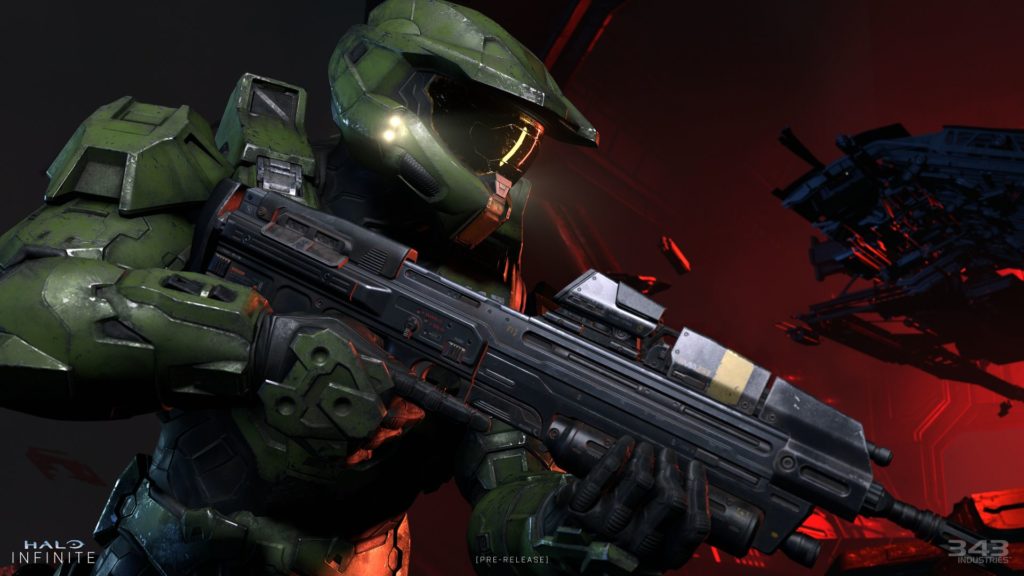
It’s a tale of two games, and for about 66% of Halo Infinite it kind of works. Because we can’t truly know happiness if we’ve never known sadness, right? So we need those hyper-linear kill-chambers to better appreciate the open world. You can’t call a game Halo “Infinite” and then release a simple 12 hour Open World rompfest with the implicit promise of more fun to come in the future — it needs to be 18 hours long and involve a full day’s work worth of trudging through endless identical corridors.
I’m being hyperbolic. I actually thought there were some good sequences along the main mission path. The boss fights were mostly great, and they were actually better indoors than out. The “Spartan Killers” that get sent after you once are a huge pushover, but they felt like a taste of something that should have been implemented better — like a ‘Bounty’ system or a ‘Wanted’ system, it felt like they were going to be a consistent threat. Instead, they were a one time thing — and not terribly tough at that.
Actually, I played the game on Normal, and I might be alone in that. It appeared to me that the game defaulted to Normal difficulty, which is how I review games, but most of my colleagues apparently tried on Heroic or harder. To me Heroic and Legendary were always best left for co-operative play — and that’s a noticeable omission from the experience here. I love coop. Love it to death. But I didn’t miss it in the open world parts of Halo Infinite, because I was having too much fun on my own.
And co-op was cool in Halos long past, when you were driving the Warthog and your mate was on the gun, mowing down grunts and doing unwise barrel rolls. But it never felt necessary in those sandbox moments. It only really worked when you found yourself in a cover shooter against semi-intelligent enemies who wouldn’t stop hiding behind their own cover, or who kept pressing forward at you with shields.
That was when the tandem efforts afforded by coop worked. Well then and driving the Warthog at the end of Halo CE and having someone to yell at every time one of you biffed it.
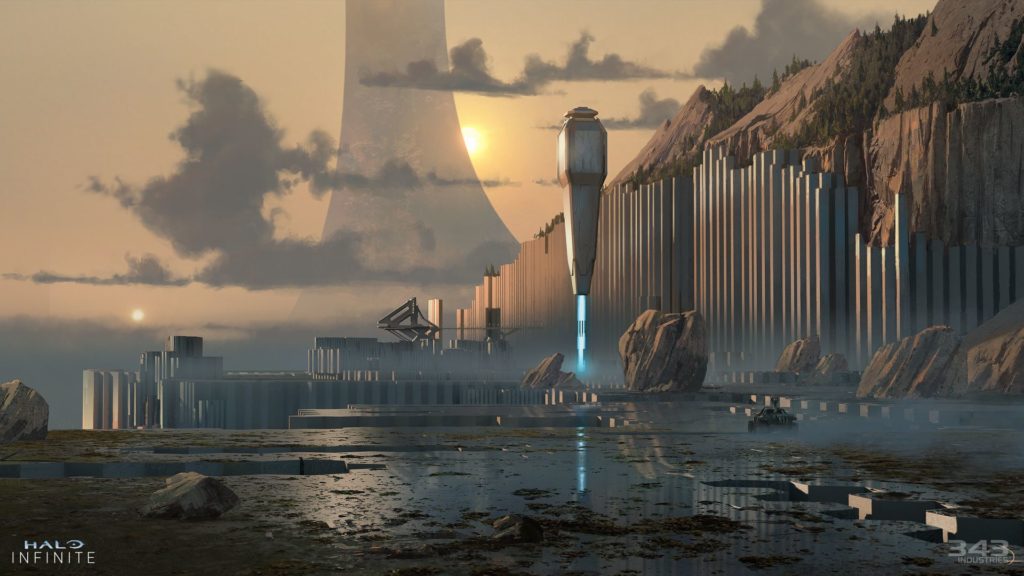
So I miss it in Halo Infinite, and I don’t think the game is feature complete without it — but it’s not a dealbreaker for me.
And that kind of sums up the game. Halo Infinite shouldn’t be this good, and it should also be better. It’s unfinished, and I think we’re missing more than just co-op, but it is spectacularly playable. Just as nobody wants to see how the sausage gets made, nobody wants to see it get eaten raw either. And maybe Halo Infinite isn’t raw, but it’s not all the way finished.

